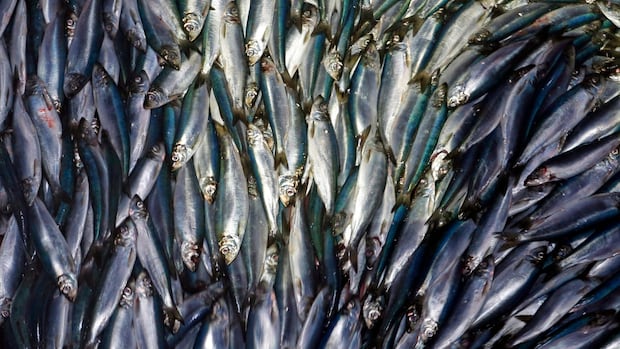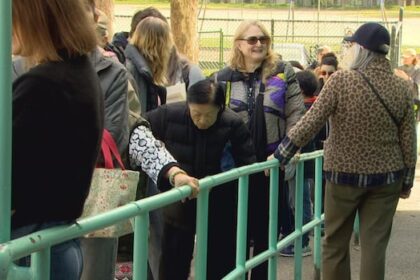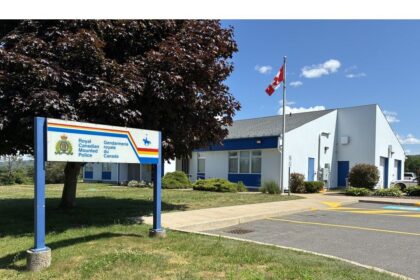Nova ScotiaA marine scientist says a decision by the federal fisheries minister to increase the herring quota off the coast of southwest Nova Scotia and New Brunswick is not rooted in good policy and was made without proper consultation with the fishery’s advisory committee.Conservationists express concern while industry says move backed up by scienceMichael Gorman · CBC News · Posted: Sep 12, 2025 1:47 PM EDT | Last Updated: September 12Fisheries and Oceans Canada increased the quota for the southwest Nova Scotia/Bay of Fundy herring fishery by 4,000 tonnes earlier this week. (Robert F. Bukaty/The Associated Press)A marine scientist says a decision this week by the federal fisheries minister to increase the herring quota off the coast of southwest Nova Scotia and New Brunswick is not rooted in good policy and was made without proper consultation with the fishery’s advisory committee.On Tuesday, Fisheries Minister Joanne Thompson advised people associated with the southwest Nova Scotia/Bay of Fundy herring fishery that the total allowable catch, or TAC, is increasing midseason from 16,000 tonnes to 20,000, an increase that will remain in place for 2026.The move comes one year after the federal government established a four-year TAC of 16,000 tonnes per year in the face of concerns that the stock has been considered in the critical zone since 2017.Jack Daly, a marine scientist with conservation group Oceana Canada, said he and other members of the advisory group had no idea a change was even being contemplated before hearing about the minister’s decision Tuesday.”We actually didn’t even have an opportunity to give our advice this past spring because they said this won’t be up for review,” he said in an interview.Disputed discussionsFisheries and Oceans Canada would not make anyone available for an interview, but in a statement said staff met with the advisory committee in April to discuss the management approach, and an industry proposal to increase the quota was discussed.Daly, who attended that meeting, said that’s not what happened. He said there was no formal proposal, and provided a slide deck from the meeting that said the department did not plan to revisit the minister’s decision each season.The slide said better information on current stock levels was anticipated following additional work requested from the Canadian Science Advisory Secretariat.Daly noted that in response to the TAC reduction last year, industry members were withholding survey data about stock levels from the government.”This really represents a government and minister that is completely controlled by the fishing industry and not listening to their own legislation, policy or their own scientists.”Maintaining stock health ‘a priority’ for DFOWhen the quota was reduced to 16,000 tonnes last year, conservationists argued it should have been even lower. They cited the challenges facing the stock and ongoing concerns that the volume of fish being taken put the food supply for whales and the overall sustainability of the stock — which provides bait for other fisheries — at risk.DFO said in a statement that the TAC was revised based on recent scientific data showing an increase in survey estimates of spawning stock biomass. Department spokesperson Rachael Mahoney said maintaining the stock health is a priority for the department.”Stock status will continue to be monitored and the department will adjust the TAC accordingly in the subsequent fishing seasons,” she said in the statement.Industry welcomes quota increaseBut Daly said any recent increases are not enough to move the herring population out of the critical zone and he’s concerned the change is not rooted in good science.”It really doesn’t make sense that you would make a decision based on one data point to drastically increase fishing on this stock.”The Seafood Producers Association of Nova Scotia did not make someone available for an interview, but in a statement the group’s president welcomed the increase in quota, pushing back against the idea that the increase is arbitrary.”The decision recognizes that our industry has long demonstrated its commitment to sustainability, investing more than $1 million annually in science and surveys, despite overly precautious TAC cuts in recent years,” said Ian McIsaac.Socio-economic effects of quota cutMcIsaac went on to say recent survey results show the stock is stable and growing, and that a quota of 21,000 tonnes would still allow for regrowth and sustainability in the long term.”The minister’s decision to increase the TAC to 20,000 tonnes is a balanced, responsible step that supports both the fishery resource and the people who depend on it.”According to the association, the herring fishery in the Bay of Fundy and southwest Nova Scotia typically supports an average of about 600 jobs and contributes about $23 million in wages per year.However, they say last year’s quota reduction resulted in a cut to both numbers, with total wages coming in around $16.4 million and job figures landing at about 430 for 2024.ABOUT THE AUTHORMichael Gorman covers the Nova Scotia legislature for CBC, with additional focuses on health care and rural communities. Contact him with story ideas at michael.gorman@cbc.ca
DFO increases herring quota for southwest N.S., Bay of Fundy fishery











